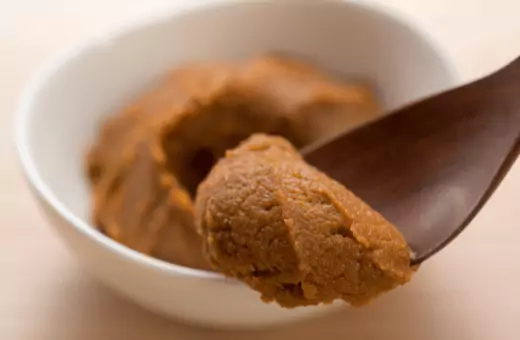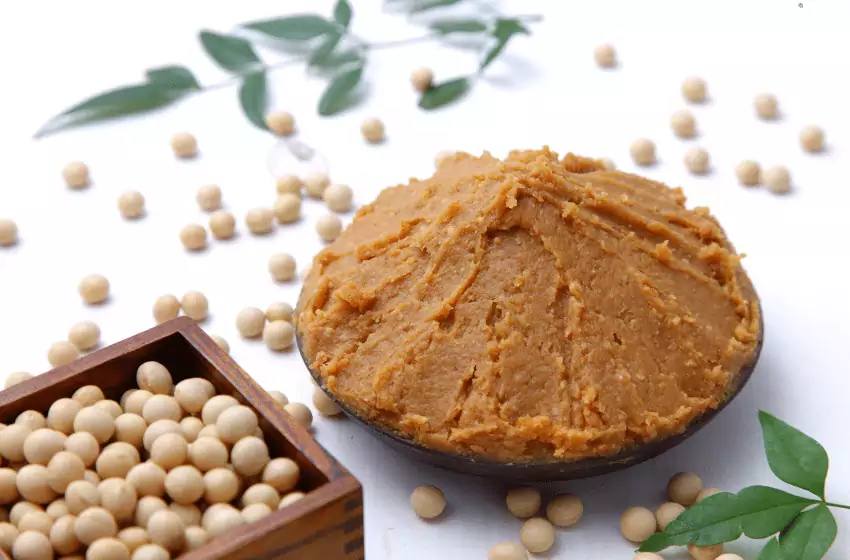Are you looking for a Thai soybean paste substitute? If you’re a fan of Thai cuisine, then you know that soybean paste is an essential ingredient in many dishes.
But what if you can’t find it at your local store or don’t want to spend the money on a bottle? Never fear; numerous replacements will provide your food with the same flavor and consistency as soybean paste.
Today, I’ll explore some of the best substitutes for Thai soybean paste and show you how to use them in your favorite Thai recipes. Let’s get started!
What is Thai bean paste?
Thai bean paste is a condiment made from fermented soybeans and rice. It has a salty, slightly sour, and sweet earthy flavor and is used as a dipping sauce, seasoning, or marinade. The most common brand in Thailand is TaoChio.
It is regularly used as a condiment for nam phrik and other spicy dishes. It may be a more important seasoning than garlic and chili peppers.
While the original Thai bean paste is made from soybeans, many people mistake chili paste or sauce for being Thai “bean” paste in the US.
It is sometimes confused with Japanese miso.
You can find it at Asian food stores or online. If you buy the brands that are sold in plastic jars, look for products that do not contain extra corn syrup or other flavorings.
The paste is yellow in color and very thick, sometimes even solid. It has a complex flavor that’s salty, sweet, and spicy.
This sauce is a staple in Thai cuisine and has been used since the days of ancient Thai cooking.
Thai Soybean Paste Substitutes
There are a few substitutes for Thai soybean paste. One is called “tauchu” and can be found in some Southeast Asian stores.
Another is a type of miso paste that can also be found in some Southeast Asian stores. If you can’t find anything, use Fermented bean paste instead.
MISO- Perfect Substitute for Thai Soybean Paste
Miso paste is a stronger, darker, and more flavorful seasoning. Substituting miso paste for Thai soybean paste will result in a saltier, less sweet, and more intensely flavored dish.

If you wish to substitute the soybean paste with miso, add half the amount of miso paste as soybean paste.
TAUCHU- Easy Alternative to Thai Bean Paste
Tauchu often known as Tauco, Taucu, or Taotjo. It is also fermented yellow soybean paste similar to the Thai one.
Tauco is widely used in Thai, Chinese, Malaysian, Indonesian, Singaporean, and other cuisines.
You can use Touchu instead of Thai bean paste in stir-fries, soup, other cooking.
FERMENTED BEAN PASTE
Fermented bean paste is made of fermented soybean. Fermented bean paste is widely used in South Asian countries from Indonesia to japan, china, etc.
You may also check some fermented bean paste alternatives here.
What do you use Thai soybean paste for?
Thai soybean paste (also known as “tao jiew”) is one of the key ingredients in Thai cuisine. It’s used to make all kinds of dipping sauces, curry pastes, and stir-fry dishes.
I love this stuff because it is easy to use and gives a lot of flavor to many dishes. The secret is in how you choose to use it.
Here are the 3 key ways:
Paste – First,
You can use Thai soybean paste as a wet seasoning by pounding it into a dry or semi-dry curry paste. When you do this, it helps to tenderize the meat and infuse many flavors into the curry.
Tao jiew is a key ingredient in many Thai curry pastes. You can buy it premade or make your own (check out the video below to see how).
Dipping sauce – Second,
Thai soybean paste can be used to make a dipping sauce. I like to use it with chili jam and finely minced garlic.
Stir fry – Finally,
Thai soybean paste can be used to make stir-fry dishes. In particular, it’s a great vegetarian option to add flavor and richness to your dishes.
Is Thai soybean paste the same as miso?
Thai soybean paste, also known as tao jiew, is not like miso. The main difference is consistency and taste.
Miso is a thicker paste and has a strong, salty taste. On the other hand, Thai soybean paste, also known as tao jiew, is a thinner paste and has a more sweet, salty taste.
Miso is made from soybean, while Thai soybean paste is made from soybeans wheat and has a deep, dark color.
Miso paste VS Soybean paste
Miso paste is a Japanese seasoning made from fermented soybeans, barley, or rice. Soybean paste is a Chinese condiment made from fermented soybeans. Miso paste is typically darker in color, saltier, and more flavorful than soybean paste.
Miso Most Popularly Used In Miso soup, miso salad dressing, marinades, glazes, and sauces.
Soybean Paste Most Popularly Used In Soups, sauces, dressings, and glazes.
Examples of dishes where you can use miso paste: Miso Salmon, Miso Tofu, and Chicken and Miso Stew.
Examples of dishes where you can use soybean paste: Spicy Tofu Stew, Spicy Miso Soup, and Vegetable Stir-Fry.
Thai soybean paste vS Korean soybean paste
Thai soybean paste is also usually spicier, while Korean soybean paste is saltier.
The two are used in different cuisines, but both are widely consumed throughout Southeast Asia. I personally use the
Thai one more often than the Korean one, but I’m glad to see more people using the Korean one in the US lately.
Read More- Substitutes for Doenjang
Wrap Up on Substitutes for Thai Soybean Paste
If you’re searching for a delicious and healthy alternative to soybean paste, give one of these Thai substitutes a try.
With so many different flavors and textures to choose from, there is bound to be one that meets your requirements. Like Miso is saltier than Thai Bean paste, so you must be careful about the salt amount in your recipe.
So get cooking and enjoy the fantastic taste of Thai cuisine! Have you tried any of these substitutes before? What was your favorite recipe?

